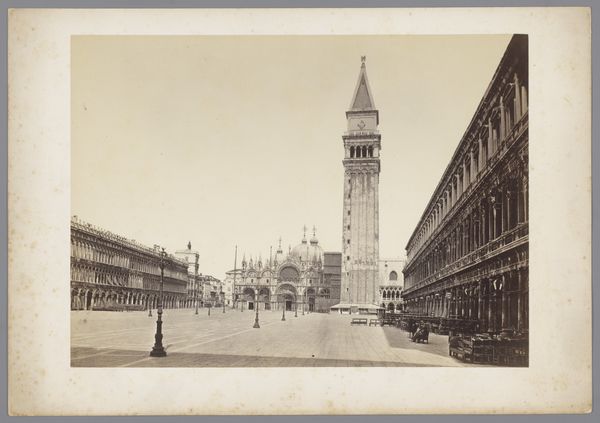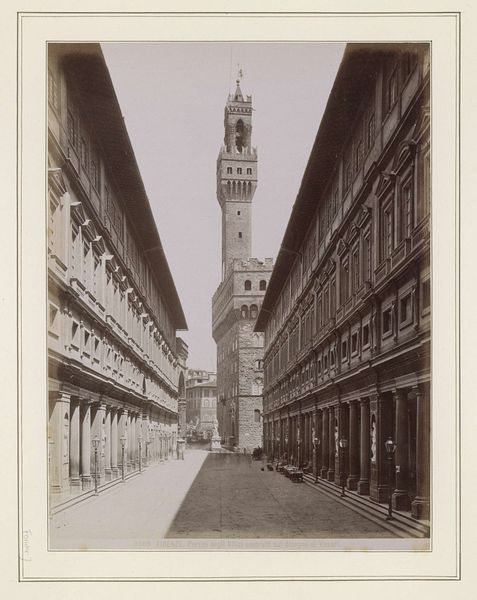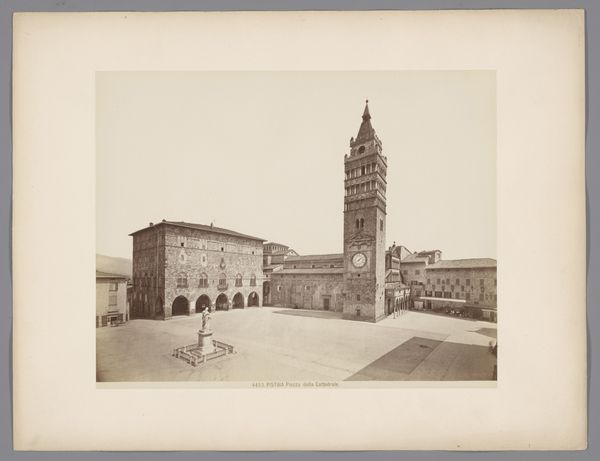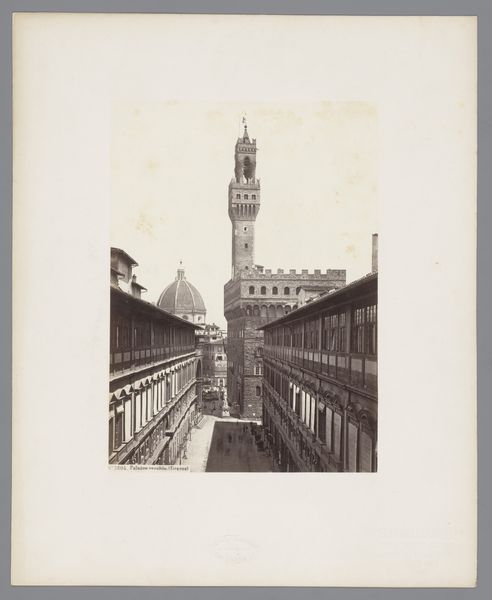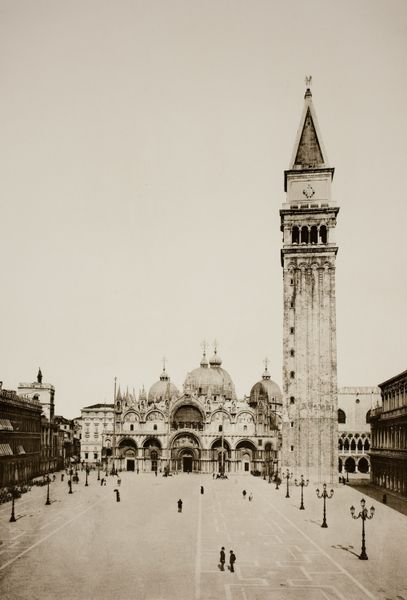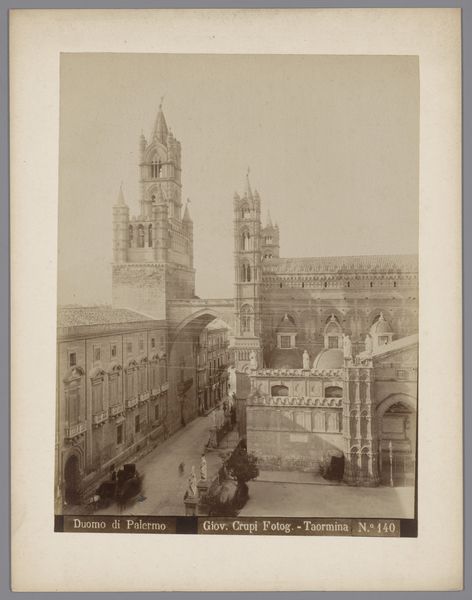
Gezicht op het San Marcoplein, de Campanile, de basiliek van San Marco en het Dogepaleis in Venetië 1860 - 1881
0:00
0:00
Dimensions: height 198 mm, width 260 mm
Copyright: Rijks Museum: Open Domain
Editor: Here we have Carlo Ponti's "View of Piazza San Marco, the Campanile, St Mark's Basilica and Doge's Palace in Venice," a gelatin silver print from sometime between 1860 and 1881. It’s quite striking how still everything is, and it makes me wonder – how do you read a photograph like this? Curator: Well, I immediately think of the labor involved. Consider the precise chemical processes required for a gelatin silver print. This wasn’t just pointing and shooting; it involved skilled artisans meticulously controlling every step, from coating the glass plate to developing the image. Editor: Right, there’s a lot of invisible labor there. So the ‘stillness’ isn't just aesthetic but also speaks to the limits of photographic technology and the social constraints surrounding the image production itself? Curator: Precisely! It prompts questions about who could afford to commission such a print and what the consumption of these images meant for perceptions of Venice. Were they purely for artistic appreciation or did they also serve a commercial purpose, like attracting tourism? Editor: It’s easy to get lost in the romance of Venice and forget about those factors. Is Ponti commenting on this commercialism, or simply participating in it? Curator: It's likely both! And even the photographic paper itself—where was it produced? By whom? Every element has a story connected to resources, labor, and economics. The architecture signifies not just artistry but materials gathered and shaped. What do you make of its impact on the cultural perception? Editor: Viewing this through the lens of materials and labor definitely transforms my perspective; it goes beyond just appreciating a pretty cityscape. Curator: Exactly. Examining the means of production brings a whole new dimension to the artwork. It’s not just an image, but a product of its time and the social structures that enabled its creation and proliferation. Editor: I’ll definitely be paying more attention to the materiality and production processes from now on. Thank you!
Comments
No comments
Be the first to comment and join the conversation on the ultimate creative platform.

